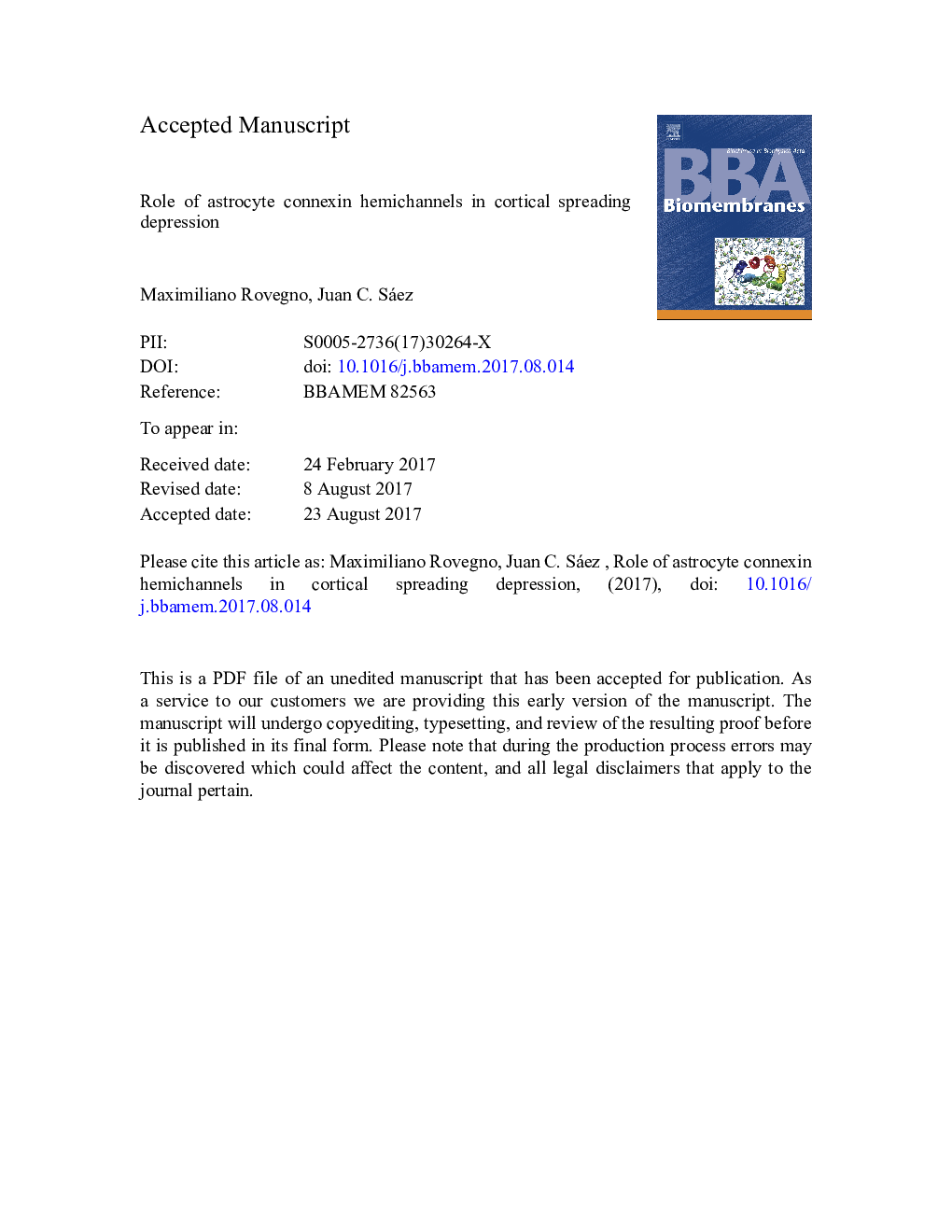| کد مقاله | کد نشریه | سال انتشار | مقاله انگلیسی | نسخه تمام متن |
|---|---|---|---|---|
| 8299838 | 1537137 | 2018 | 31 صفحه PDF | دانلود رایگان |
عنوان انگلیسی مقاله ISI
Role of astrocyte connexin hemichannels in cortical spreading depression
ترجمه فارسی عنوان
نقش هومیچنزهای کانکسین آستروسسیت در افسردگی گسترش کرت
دانلود مقاله + سفارش ترجمه
دانلود مقاله ISI انگلیسی
رایگان برای ایرانیان
کلمات کلیدی
کانکسین ها، هیمکنال، گلیا، آسیب مغزی، گسترش افسردگی،
موضوعات مرتبط
علوم زیستی و بیوفناوری
بیوشیمی، ژنتیک و زیست شناسی مولکولی
زیست شیمی
چکیده انگلیسی
Cortical spreading depression (CSD) is an intriguing phenomenon consisting of massive slow brain depolarizations that affects neurons and glial cells. It has been recognized since 1944, but its pathogenesis has only been uncovered during the last decade. Acute brain injuries can be further complicated by CSD in >Â 50% of severe cases. This phenomenon is repetitive and produces a metabolic overload that increments secondary damage. Propagation of CSD is known to be linked to excitotoxicity, but the mechanisms associated with its initiation remain less understood. It has been shown that CSD can be initiated by increases in extracellular [K+] ([K+]e), and animal models use high [K+]e to promote CSD. Connexin hemichannel activity increases due to high [K+]e and low extracellular [Ca2Â +], conditions that occur after brain injury. Moreover, glial cell gap junction channels are fundamental in controlling extracellular medium composition, particularly in maintaining normal extracellular glutamate and K+ concentrations through “spatial buffering”. However, the role of astrocytic gap junctions under tissue stress can change to damage spread in the acute damage zone whereas the reduced communication in adjacent zone would reduce cell dead propagation. Here, we review the main findings associated with CSD, and discuss the possible involvement of astrocytic connexin-based channels in secondary damage propagation. This article is part of a Special Issue entitled: Gap Junction Proteins edited by Jean Claude Herve.
ناشر
Database: Elsevier - ScienceDirect (ساینس دایرکت)
Journal: Biochimica et Biophysica Acta (BBA) - Biomembranes - Volume 1860, Issue 1, January 2018, Pages 216-223
Journal: Biochimica et Biophysica Acta (BBA) - Biomembranes - Volume 1860, Issue 1, January 2018, Pages 216-223
نویسندگان
Maximiliano Rovegno, Juan C. Sáez,
